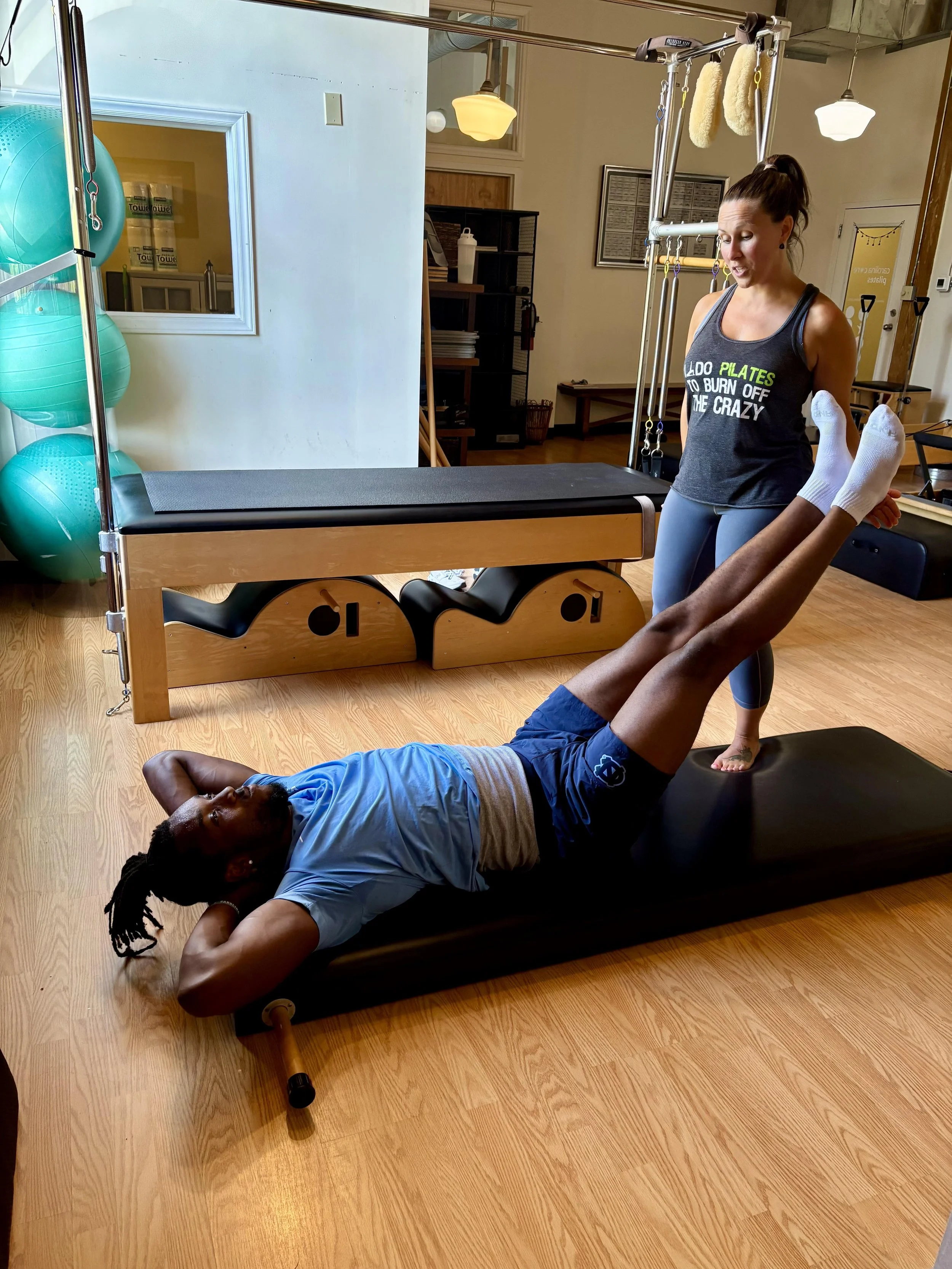Puh-LAH-teez was developed by Joseph Hubertus Pilates in the early 1920’s. Originally, he coined the term “contrology”, the art of control or complete coordination of body, mind and spirit. His guiding philosophy to achieving good health was that the whole being- body, mind, and spirit must be addressed!
Joseph Pilates was born in Germany on November 30, 1880. He was a frail child, suffering from asthma, rickets, and rheumatic fever. At a young age, he dedicated himself to finding ways to cope with these ailments and to sustain his health and fitness. Pilates studied Yoga, Zen meditation, gymnastics, diving, and bodybuilding, among other things. He worked as a boxer, circus performer, self defense trainer, nurse and model for anatomy charts. He combined a multi-layered approach to body conditioning that balances strength building, body awareness, controlled breath, and flexibility to develop what we know today as Pilates.
Joseph Pilates’ rich background provided him the foundation to innovate a cutting edge system that he developed throughout his life. Pilates immigrated to New York City to pursue a new life (some say he was invited to the US to train Max Schmelling, renowned German boxer who made his fame in the US). Joe met Clara on his way to the US and they quickly married. She played an integral role in developing and teaching the Pilates method of body conditioning. Joe and Clara opened their first studio in 1926, teaching classes in Contrology. Word spread about the benefits of Contrology, and notable individuals in the dance community, including Martha Graham, Ted Shawn, Hanya Holm, and George Balanchine, studied with Pilates. The system of body conditioning continued to develop and was renamed Pilates some time after the death of Joesph Pilates in 1967. Over the course of his life, Pilates developed more than 500 exercises for the various pieces of apparatus he innovated. Pilates is a holistic approach to well being and a lifelong process of refinement.
Benefits
- Improves posture and corrects alignment
- Improves mental concentration
- Increases energy
- Prevents injuries
- Heals muscular and soft tissue pain
- Produces efficient breathing
- Develops strength, flexibility, coordination, speed, agility, and endurance (excellent for cross training)
- Heightens body awareness and enhances body control
- Teaches correct muscle activation
- Improves balance
- Promotes relaxation and release of tension
- Develops and maintains musculature and bone density
- Is appropriate for all individuals- no matter fitness level, age, pregnancy, etc
Pilates places emphasis on the symbiotic relationship of the mind and body through the following PRINCIPLES:
Centering is the ability to focus attention on one small sensation
Examples: Ability to engage a specific muscle or to release unwanted tension
Concentration is the ability to mentally focus on creating an action in the body
Example: Specifically refers to the mind-body connection
Control addresses the ability to control both the physical and mental state
Example: Controlling the mental state causes more control of the physical which causes more control of the mental and so on and so forth
Precision is the ability to perform an exact, detailed movement with your body
Example: We will never do large repetitions of the same movement, instead we will concentrate on doing them with precision
Flow is the ability to transition smoothly from one exercise to the next
Example: Clients develop the ability to flow from one movement to the next, valuing each movement for what it is and the entire workout as a whole
Breath is of extreme importance in Pilates and is the ability to optimize lung capacity to aid in everyday tasks.
Example: “Exhale” is a word you will hear often in a pilates session reminding you to breathe!

